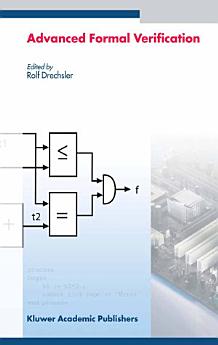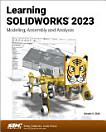Advanced Formal Verification
maí 2007 · Springer Science & Business Media
Rafbók
250
Síður
reportEinkunnir og umsagnir eru ekki staðfestar Nánar
Um þessa rafbók
Modern circuits may contain up to several hundred million transistors. In the meantime it has been observed that verification becomes the major bottleneck in design flows, i.e. up to 80% of the overall design costs are due to verification. This is one of the reasons why several methods have been proposed as alternatives to classical simulation. Simulation alone cannot guarantee sufficient coverage of the design resulting in bugs that may remain undetected.
As alternatives formal verification techniques have been proposed. Instead of simulating a design the correctness is proven by formal techniques. There are different areas where these approaches can be used: equivalence checking, property checking or symbolic simulation. These methods have been successfully applied in many industrial projects and have become the state-of-the-art technique in several fields. However, the deployment of the existing tools in real-world projects also showed the weaknesses and problems of formal verification techniques. This gave motivating impulses for tool developers and researchers.
Advanced Formal Verification shows the latest developments in the verification domain from the perspectives of the user and the developer. World leading experts describe the underlying methods of today's verification tools and describe various scenarios from industrial practice. In the first part of the book the core techniques of today's formal verification tools, such as SAT and BDDs are addressed. In addition, multipliers, which are known to be difficult, are studied. The second part gives insight in professional tools and the underlying methodology, such as property checking and assertion based verification. Finally, analog components have to be considered to cope with complete system on chip designs.
In this book the state-of-the-art in many important fields of formal verification are described. Besides the description of the most recent research results, open problems and challenging research areas are addressed. Because of this, the book is intended for CAD developers and researchers in the verification domain, where formal techniques become a core technology to successful circuit and system design. Furthermore, the book is an excellent reference for users of verification tools in order to acquire a better understanding of the internal principles and subsequently drive the tools to the highest performance. In this context the book is dedicated to those in industry and academia to stay informed about the most recent developments in the field of formal verification.
As alternatives formal verification techniques have been proposed. Instead of simulating a design the correctness is proven by formal techniques. There are different areas where these approaches can be used: equivalence checking, property checking or symbolic simulation. These methods have been successfully applied in many industrial projects and have become the state-of-the-art technique in several fields. However, the deployment of the existing tools in real-world projects also showed the weaknesses and problems of formal verification techniques. This gave motivating impulses for tool developers and researchers.
Advanced Formal Verification shows the latest developments in the verification domain from the perspectives of the user and the developer. World leading experts describe the underlying methods of today's verification tools and describe various scenarios from industrial practice. In the first part of the book the core techniques of today's formal verification tools, such as SAT and BDDs are addressed. In addition, multipliers, which are known to be difficult, are studied. The second part gives insight in professional tools and the underlying methodology, such as property checking and assertion based verification. Finally, analog components have to be considered to cope with complete system on chip designs.
In this book the state-of-the-art in many important fields of formal verification are described. Besides the description of the most recent research results, open problems and challenging research areas are addressed. Because of this, the book is intended for CAD developers and researchers in the verification domain, where formal techniques become a core technology to successful circuit and system design. Furthermore, the book is an excellent reference for users of verification tools in order to acquire a better understanding of the internal principles and subsequently drive the tools to the highest performance. In this context the book is dedicated to those in industry and academia to stay informed about the most recent developments in the field of formal verification.
Gefa þessari rafbók einkunn.
Segðu okkur hvað þér finnst.
Upplýsingar um lestur
Snjallsímar og spjaldtölvur
Settu upp forritið Google Play Books fyrir Android og iPad/iPhone. Það samstillist sjálfkrafa við reikninginn þinn og gerir þér kleift að lesa með eða án nettengingar hvar sem þú ert.
Fartölvur og tölvur
Hægt er að hlusta á hljóðbækur sem keyptar eru í Google Play í vafranum í tölvunni.
Lesbretti og önnur tæki
Til að lesa af lesbrettum eins og Kobo-lesbrettum þarftu að hlaða niður skrá og flytja hana yfir í tækið þitt. Fylgdu nákvæmum leiðbeiningum hjálparmiðstöðvar til að flytja skrár yfir í studd lesbretti.






